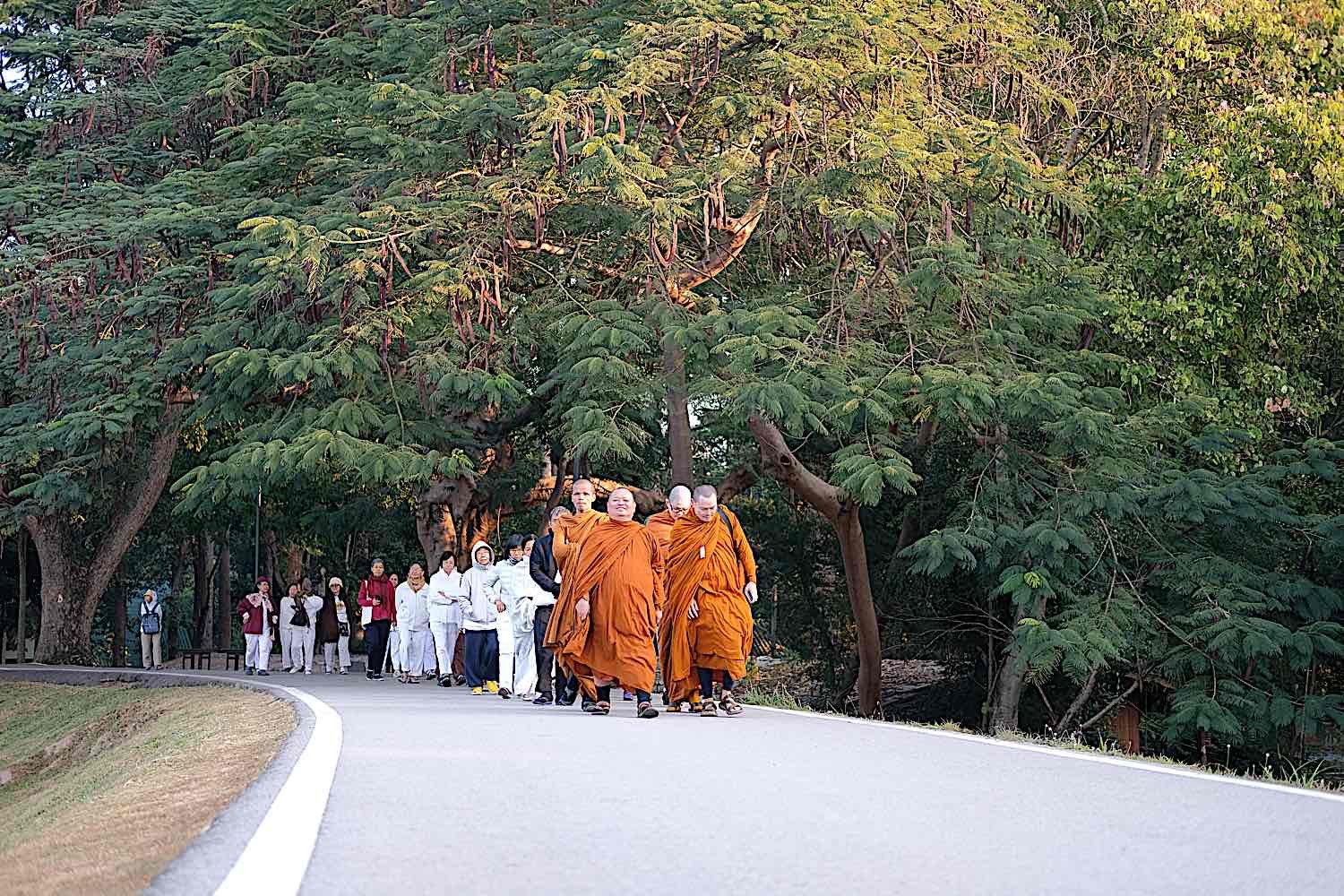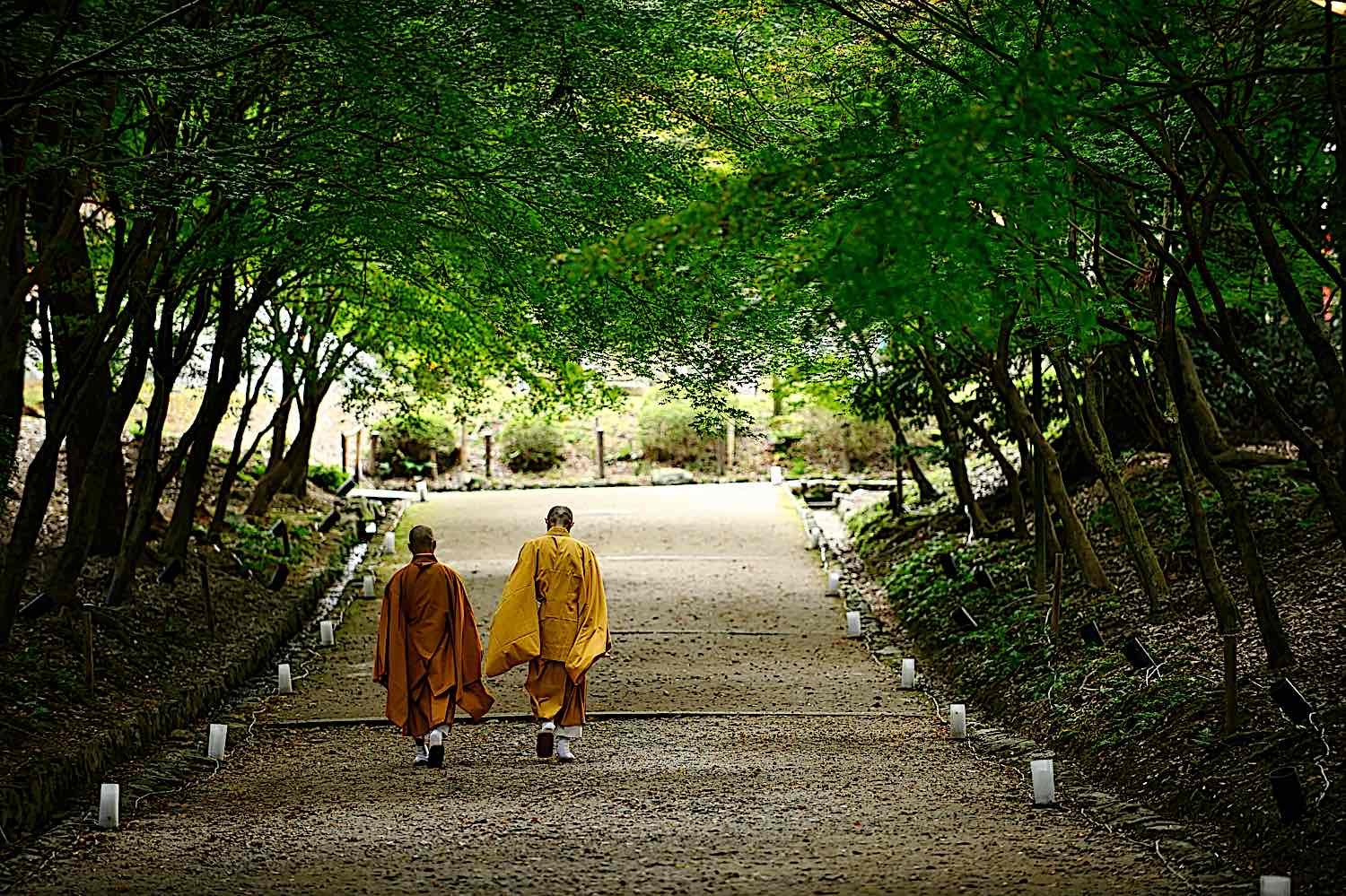What Is Walking Meditation? For Active Bodies and Minds, Walking Meditation May be the Change of Pace You Need to Progress

When meditating, sitting in silence may not feel like the right fit for you. Meditation involves much more than one body position or environment, so you might enjoy a walking meditation practice more. Check out everything you should know about the helpful meditation routine to determine if it might benefit your life.
By Beth Rush
Of Body+Mind Magazine
[Disclaimer: Always seek the advice of your health care practitioners when experiencing pain or other medical issues.]

What Is Walking Meditation?
Walking meditation is the act of increasing your focus on internal and external sensations while walking at a casual pace. [1] Part of your mind focuses on the act of moving, making it easier to guide your thoughts toward your preferred meditative practice without complete silence.
Many people practice other forms of meditation while sitting in a quiet room or listening to background music that reduces their anxiety. [2] Trying multiple forms of meditation practices, like walking and concentrating on positive thoughts, makes it easier to know which is best for you.

When Did Walking Meditation Begin?
Although it’s unclear who first combined meditating and walking, pursuing The Eightfold Path of Buddhism requires right mindfulness (kammanta), right effort (samma vayama) and right concentration (samadhi). [3]
Meditating requires focusing on your breath [4], which is easier when doing an activity that requires steady breathing, like walking. Research shows that walking and doing a second task, like meditating, activates the prefrontal cortex. [5] The prefrontal cortex is responsible for your concentration, resulting in greater meditative focus because it’s more active while you walk. [6]

Who Practices Walking Meditation Today?
Anyone can practice walking meditation whether they consider themselves a Buddhist or not. Meditation is a helpful tool to hone your concentration and feel more connected with your body’s sensations. It also reduces stress effectively by calming the nervous system with steady breathing. [7]
Any time you need to walk somewhere, consider it as an invitation to try meditating. Take slow, deep breaths and focus on what you feel. Name a different physical sensation with each inhale and reflect on your appreciation for it as you exhale. You’ll begin feeling calmer without disrupting your routine.

Quick Facts to Guide Your Walking Meditation Sessions
- Choose a place that’s safe for walking while directing your focus inward. It might be better to try meditative walking over a paved trail than a rocky path with roots sticking out of the ground.
- You can also try this meditation by walking the same path back and forth to maintain your focus, as some Zen Masters do. [8]
- Start meditating with an intention. You could use your time to get more in tune with your body’s needs, emotional state or appreciation for the present moment.
- Give yourself grace. If focusing is challenging when there’s noise around you, use sound-blocking headphones to practice honing your thoughts without external distractions.
- Set a time limit by picking a destination so you don’t exhaust yourself by trying to meditate longer than you’re comfortable with.
- Remember, it’s okay to pause your meditation session. If you want to change settings, get a drink of water or change what your thoughts center around, you’ll still be able to meditate when you’re ready to return to your practice.
Consider Trying Walking Meditation
Combining meditation and movement might make the practice more manageable for you. Use these tips to enjoy centering your thoughts without disrupting your day.
Sources
- https://ggia.berkeley.edu/practice/walking_meditation – Berkeley Greater Good Science Center
- https://www.frontiersin.org/journals/psychology/articles/10.3389/fpsyg.2021.648062/full – Frontiers in Psychology
- http://www.stat.wmich.edu/naranjo/zennotes/ajahn1.html – Western Michigan University
- https://www.upmc.com/-/media/upmc/Services/integrative-medicine/documents/upmc-cim-newsletter-summer-2011.pdf – UPMC Center for Integrative Medicine
- https://jneuroengrehab.biomedcentral.com/articles/10.1186/s12984-023-01211-x – Journal of NeuroEngineering and Rehabilitation
- https://www.aans.org/en/Patients/Neurosurgical-Conditions-and-Treatments/Anatomy-of-the-Brain – American Association of Neurological Surgeons
- https://buddhaweekly.com/meditation-increase-receptivity-activity-sensitivity-why-thats-a-good-thing/ – Buddha Weekly
- https://buddhaweekly.com/cankama-sutta-walking-meditation-sutra-put-mileage-buddhist-practice-formal-mindful-walking/ – Buddha Weekly
More articles by this author

Chintachakra White Wish-Granting Wheel Tara: The All-in-One Mother of Buddhas in Vajrayana Buddhism – Her Significance, Mantra and Why Her Practice is Essential

The First Doctor: Medicine Buddha Bhaisajyaguru Lapis Lazuli Light — Empowering You to Heal; the Buddha of Healing and Medicine and Doctors

Upaya: Is Skillful Means, Imagination and Creativity the Path to Realizations? Experiential Buddhist Practice or Yogas Enhance Intellectual Study.
Search
Latest Features
Please support the "Spread the Dharma" mission as one of our heroic Dharma Supporting Members, or with a one-time donation.
Please Help Support the “Spread the Dharma” Mission!

Be a part of the noble mission as a supporting member or a patron, or a volunteer contributor of content.
The power of Dharma to help sentient beings, in part, lies in ensuring access to Buddha’s precious Dharma — the mission of Buddha Weekly. We can’t do it without you!
A non-profit association since 2007, Buddha Weekly published many feature articles, videos, and, podcasts. Please consider supporting the mission to preserve and “Spread the Dharma." Your support as either a patron or a supporting member helps defray the high costs of producing quality Dharma content. Thank you! Learn more here, or become one of our super karma heroes on Patreon.
Lee Kane
Author | Buddha Weekly
Lee Kane is the editor of Buddha Weekly, since 2007. His main focuses as a writer are mindfulness techniques, meditation, Dharma and Sutra commentaries, Buddhist practices, international perspectives and traditions, Vajrayana, Mahayana, Zen. He also covers various events.
Lee also contributes as a writer to various other online magazines and blogs.















